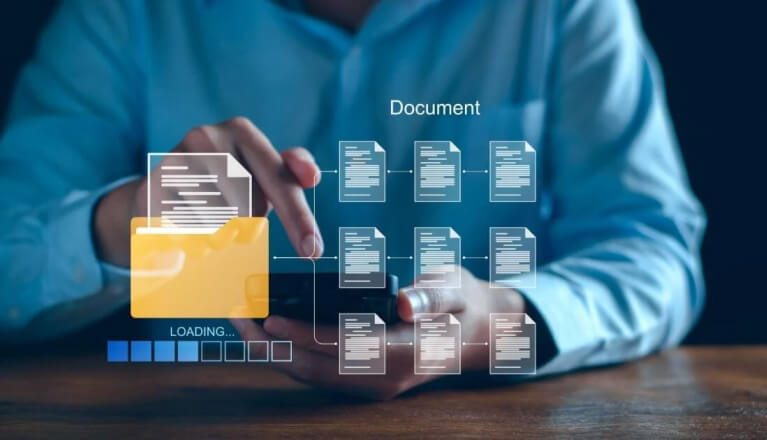© 2025. All Rights Reserved. Powered by Gritstone Technologies

Even in today’s digital-first world, mistakes in document handling are still all too common. A wrong number in a contract, a missing field in a form, or a misrouted document can lead to delays, compliance issues, or worse - lost business. As organizations grow and handle larger volumes of paperwork, the chances for human error multiply.
That’s where Artificial Intelligence (AI) comes in. More than just a buzzword, AI is proving to be a powerful tool for making digital document processes smarter, faster, and far more accurate. From reviewing documents for inconsistencies to flagging errors in real time, AI is helping businesses reduce the risks that come with manual oversight.
In this blog, we’ll explore how AI minimizes human error across the document lifecycle - and why that shift matters for modern businesses.
Accurate Data Capture, Every Time
Manual data entry is one of the most common sources of document-related errors. Typos, missing values, or outdated information can easily slip through the cracks when handled by busy teams.
AI-powered systems can extract data from documents - whether they’re scanned PDFs, digital forms, or handwritten notes - and automatically validate it. These tools recognize patterns and check for inconsistencies, helping ensure the information is complete and correct before it ever reaches the next step in your workflow.
Example: An AI engine processing employee onboarding forms can identify if a tax form is missing a signature or if critical ID fields are blank, flagging the issue before submission.
Real-Time Error Detection
AI doesn’t just passively process information - it actively looks for mistakes. Using Natural Language Processing (NLP) and machine learning, AI can review documents for anomalies like:
- Mismatched dates or values
- Inconsistent formatting
- Missing sections or required fields
- Incorrect legal or regulatory language
These tools act like a second set of eyes, catching things a human might overlook - especially in repetitive or time-sensitive tasks.
Example: When reviewing a sales agreement, AI can flag if a discount clause has been omitted or if standard payment terms differ from company policy
Predictive Autofill and Smart Suggestions
AI learns from historical data and user behavior to make intelligent predictions. As documents are created or updated, AI can recommend commonly used terms, clauses, or values - helping prevent repetitive mistakes and speeding up the process.
Example: While creating a new vendor contract, the system might auto-suggest standard liability terms or pre-fill common billing information based on similar documents.
Over time, this not only reduces manual effort but also enforces consistency across all your documents.
Smarter Approvals and Routing
Routing documents to the wrong person—or skipping an essential reviewer—can stall workflows or cause compliance issues. AI helps avoid this by analyzing document content and determining the appropriate approval chain automatically.
Example: A procurement document containing sensitive financial data might be flagged for CFO approval, while a general purchase request might go to a department head ensuring the right eyes see the right content at the right time.
This level of automation minimizes communication breakdowns and ensures that processes move forward without unnecessary back-and-forth.
Built-In Compliance and Audit Readiness
For industries with strict compliance rules, AI can help enforce policy checks, document retention standards, and audit trails. AI tools can ensure documents include all required fields, meet formatting rules, and are stored or archived in line with legal requirements.
Example: A healthcare company using AI can verify that every patient consent form includes a timestamp and digital signature, reducing legal exposure and making audits faster and simpler.
The Payoff: Fewer Errors, Greater Confidence
The impact of AI on document accuracy is hard to ignore. With fewer manual mistakes, businesses see faster turnaround times, stronger compliance, better customer experiences, and greater peace of mind. More importantly, teams are freed from time-consuming reviews and rework - giving them more time to focus on high-value tasks.
As AI continues to evolve, its ability to support smarter, error-free document handling will only grow. For organizations ready to modernize, now is the time to embrace intelligent automation and leave the guesswork - and the errors - behind.





